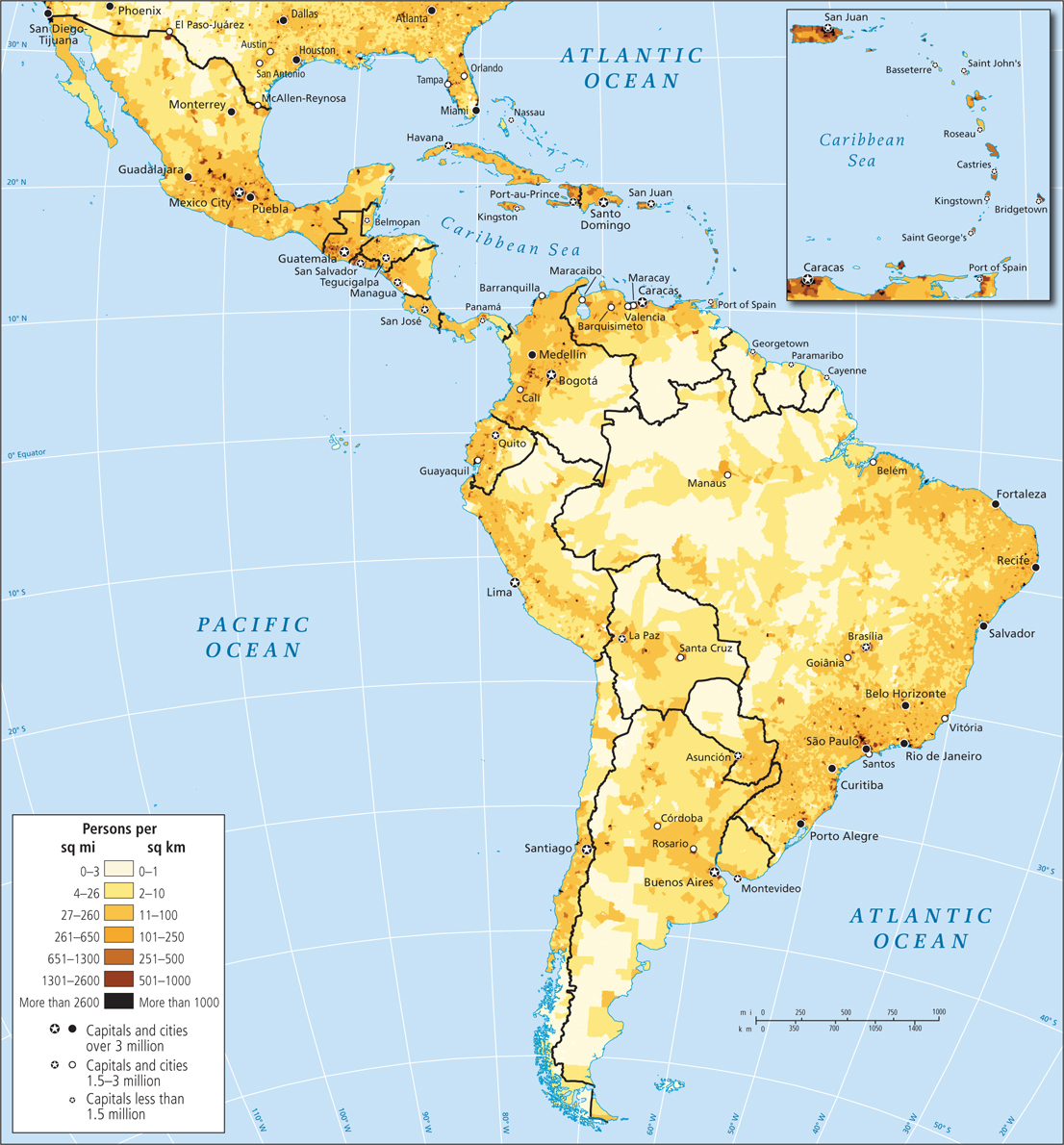3.8 POPULATION AND GENDER
GEOGRAPHIC INSIGHT 5
Population and Gender: During the early twentieth century, the combination of cultural and economic factors and improvements in health care created a population explosion. By the late twentieth century, improved living conditions, expanded access to education and medical care, urbanization, and changing gender roles were all working together to reduce population growth.
By 2013, about 606 million people were living in Middle and South America, close to ten times the highest estimated population of the region in 1492. Today, populations in Middle and South America continue to grow but are doing so at an ever-
Slowing Population Growth
Birth rates stayed high for much of the twentieth century for a variety of reasons. In agricultural areas, children were seen as sources of wealth because they could do useful farm and household work at a young age and eventually would care for their aging elders. Worry over infant death rates persisted, so some parents had four or more children to be sure of raising at least a few to adulthood. Another factor was the Roman Catholic Church’s opposition to systematic family planning.
By the 1970s, the region was undergoing a demographic transition (see Figure 1.28). Between 1975 and 2013, the annual rate of natural increase (the birth rate minus the death rate) for the entire region fell from about 1.9 percent to 1.3 percent—

These changes happened for a variety of reasons. Better access to food, shelter, sanitation, and medical care reduced infant mortality, encouraging couples to have only two or three children instead of five or more. As populations urbanized and economies grew, women gained better access to education and employment outside the home, and so delayed childbearing and had smaller families. This trend is continuing as women move into high-
However, because 28 percent of the region’s population is under the age of 15, even if couples have only one or two children, the population will continue to grow as this large group reaches the age of reproduction. Population projections for the year 2050 are for 780 million people, and supplying this extra 180 million people with food, water, homes, schools, and hospitals will be a challenge.
Population Distribution
The population density map of this region reveals a very unequal distribution of people. Comparing the population density map (Figure 3.25) with the landforms map (see Figure 3.1), you will find areas of high population density in a variety of environments. Some of the places with the highest densities, such as those around Mexico City and in Colombia and Ecuador, are in highland areas. But high concentrations are also found in lowland zones along the Pacific coast of Central America, and especially along the Atlantic coast of South America. The cool uplands (tierra templada) were densely occupied even before the European conquest. Most coastal lowland concentrations, in the tierra caliente, are near seaports with vibrant globalizing economies and a cosmopolitan social life that attracts people.

THINGS TO REMEMBER
GEOGRAPHIC INSIGHT 5
Population and Gender During the early twentieth century, the combination of cultural and economic factors and improvements in health care created a population explosion. By the late twentieth century, improved living conditions, expanded access to education and medical care, urbanization, and changing gender roles were all working together to reduce population growth.
Because 28 percent of the region’s population is under age 15, even if couples choose to have only one or two children, the population will continue to grow as this large group reaches the age of reproduction.